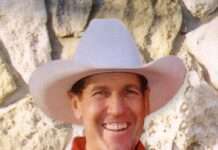Four years ago, students and educators in southwest Kansas began talk of bringing a satellite campus from one of the state’s universities to Dodge City (Fort Hays was mentioned). Students wanted to pursue four-year degrees in the southwest because they wanted to live there. The educators wanted to teach there.
At stake, they said, was the long-term health of communities in the region, an “education desert” in the one quadrant of the state with no four-year public university. The campus at St. Mary of the Plains, a liberal arts college that closed in 1992, was mentioned as a potential site. Legislators yawned.
Many young men and women today pursue college after high school, a degree and a return to farm country. Scholarship applications, informal polls and surveys reveal a pulsating call of home, a longing for places they came to love while growing up.
*
Despite indifference in Topeka, there are signs of energy and advantage for farm towns and communities. Among other marks:
‒ Opportunity zones:
A federal plan involving state and local government directs infrastructure improvements, technology upgrades, housing programs and other aid to communities with growth potential. These are often places with an institution of higher learning and a thriving hospital.
‒ Medicaid expansion:
Rural hospitals are not thriving. For five years, Gov. Laura Kelly has offered plans to expand Medicaid for 150,000 Kansans who earn too much to qualify for Medicaid, but not enough to pay for private insurance. This year, Washington would pay 100 percent of the expansion cost for two years; after that, a hospital surcharge pays the state’s ten percent share with no added cost to taxpayers.
Of 102 rural hospitals, 84 reported financial losses because the under-insured or uninsured couldn’t pay their bills. A dozen have closed since 2005, 27 are at immediate risk of collapse and 59 are in jeopardy. Medicaid expansion is to save a vital service for life in rural communities.
In recent polls, more than 70 percent support expansion. Our neighbors ‒ Nebraska, Colorado Missouri, Oklahoma ‒ have expanded Medicaid. Kansas is one of ten states that have not. Legislative leaders in Topeka have refused even to allow debate of the idea.
‒ Property tax relief:
Over the past 20 years, the legislature has sluiced away more than $1.5 billion in property tax relief owed to Kansas cities and counties and ordered by state law. The money, now more than $100 million annually, is derived from the Local Ad Valorem Tax Relief fund, framed in statutes dating to 1937.
Legislators each year have routinely suspended the transfer ‒ 3.63 percent of annual state sales tax revenues ‒ and siphoned the money for dubious purposes, political pets or, lately, a doubling of their own pay.
The governor wants to make amends. Her plan would not cover the 20-year theft, but at least commits $54 million annually to local tax relief. Payments to cities and counties would be apportioned by population and property valuation.
*
There are other signs, including support for workforce development and a long-term solution for a groundwater aquifer crisis that threatens farms and cities.
Solar and wind power have taken root across the Smoky Hills and High Plains. A process called “carbon sequestration” to keep carbon out of the atmosphere, gains interest. Corrective farming practices include planting cover crops, leaving organic matter in fields after harvest, rotating in additional crops and managing grazing.
We once climbed out of depressions with government help and local innovation. Invention and change are again on the march in farm country and would blossom, if only Topeka’s leadership had sense enough to back the effort.






“….if only Topeka’s leadership had sense enough to back the effort.”
Oh, well, nice thought…